Enjoy FREE Shipping on Orders Over $99
DON’T HAVE A COUPON CODE?
Use EZ10OFF At Checkout to Save 10% On Your Entire Order Today!
11 Most Common Nutrient Deficiencies
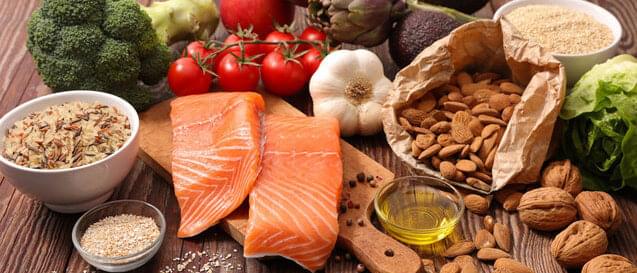
Americans are eating better than ever before. According to the Organic Trade Association, Americans spent $47 billion on organic and household products in 2016 (up from $20 billion in 2007). And studies by the U.S. Department of Agriculture show that 73% of Americans are focused on eating better.
Yet despite all that healthy eating:
In other words, most Americans are getting “thinner” on vital dietary nutrients regardless of efforts to eat better, and you’re probably among them. That’s why the American Dietetic Association recommends daily nutritional supplements to close the vitamin and mineral gap.
Many factors can cause natural foods to be nutrient-deficient, from soil depletion and food-processing practices to climate change. Yet the BIG cause of nutritional decline in America appears to be time and convenience.
In an increasingly hectic world, less than 60% of Americans make home-cooked meals. Even though Americans spent $47 billion on organic produce in 2016, sales of packaged foods in the U.S. hit a staggering $372 billion in 2016, and this number makes sense.
With most Americans now working longer hours (according to Gallup), convenience foods aren’t a luxury for many people. They’re a necessity. But the price of convenience usually comes as fattening foods that are poor in nutritional value, and that can lead to all kinds of health problems, including:
Here’s the good news: You can easily turn nutrient deficiency around today, and you don’t need to spend hours in the kitchen making complex meals.
Here are 11 of the most common nutrient deficiencies, including early warning signs and simple tips to easily and naturally get the nutrients you need.
Magnesium
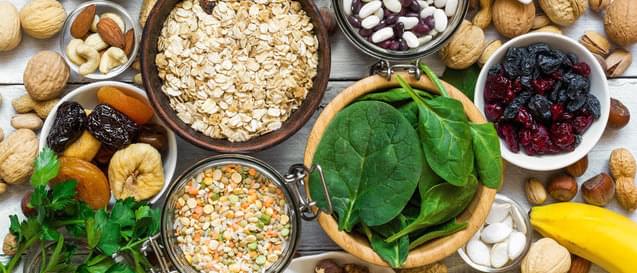
Up to 80% of Americans are deficient in Magnesium, which is critical to more than 300 biological processes in your body, including heart and muscle function, energy and cognitive health.
As a mineral naturally found in simple snack foods like almonds, cashews and peanuts, Magnesium also regulates blood sugar and helps build strong bones.
Magnesium can also be found in simple salad or stir-fry additions like spinach, black beans, edamame and tofu, or in seafood proteins like salmon, mackerel, halibut and crab.
Early warning signs of Magnesium deficiency include:
Long-term risks of Magnesium deficiency include stroke and heart attack, osteoporosis, hypertension, preeclampsia and eclampsia, and type 2 diabetes.
CAUTION: Although spinach is one of the highest natural sources of Magnesium, spinach is also #2 on the EWG’s Dirty Dozen List. So make sure to shop for spinach that’s certified organic and pesticide-free.
When shopping for a Magnesium supplement, make sure to look for a 100% all-natural product made from clinically tested organic blends.
Vitamin E
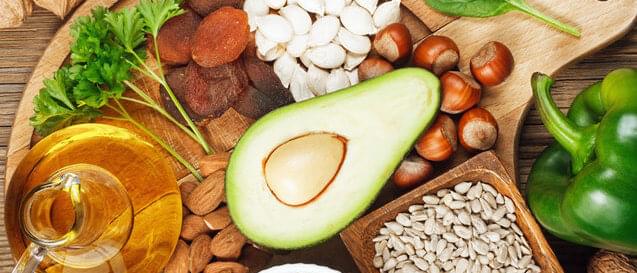
Most people think of Vitamin E as an important nutrient to preserve healthy skin and protect against eye disorders. Fewer think of Vitamin E as a key nutrient for maintaining good brain health. However if you’ve ever forgotten where you parked or why you walked into a room, you may be interested in knowing two things:
According to multiple studies published by the Harvard School of Public Health:
Early warning signs of Vitamin E deficiency include:
As a fat-soluble antioxidant, Vitamin E refers to a family of compounds divided into two main categories: Tocopherols (considered “true” Vitamin E) and Tocotrienols. To get the best results, Vitamin E should be consumed as a mixed, full spectrum of Tocopherols and Tocotrienols.
Good dietary sources of full-spectrum Vitamin E include easy natural snack foods like hazelnuts, almonds, walnuts and pecans. Other sources include olive oil, legumes and green vegetables like spinach and broccoli.
Folate
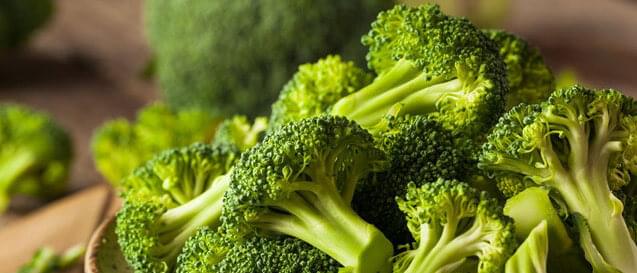
All women of childbearing age should pay close attention. This especially true if you’re a woman between ages 18-24.
According to the U.S. Public Health Service, 61% of women in this age group have never heard of Folate. That means the main problem with Folate deficiency appears to be insufficient knowledge, and that deficiency poses a big risk to unborn children.
Folate (or, folic acid) is a B Vitamin that works closely with Vitamin B12 to help your body make DNA and produce new red blood cells. Also known as Vitamin B9, Folate also protects against neural-tube birth defects like spina bifida and anencephaly, which tragically affect about 3,000 pregnancies each year in America.
Early warning signs of Folate deficiency include:
While most Americans get adequate Folate in fortified grain foods like cereal, pasta and rice, the U.S. Public Health Service recommends women of childbearing age to consume 400mcg of Folate daily to reduce the risk of birth defects.
Studies show that women who take Folate supplements before conception or during the first trimester may reduce the risk of neural-tube defects by 72%-100%.
Other food sources of Folate include liver, spinach, Brussels sprouts, broccoli, beans, beets, orange juice and eggs (specifically the yolk).
Vitamin D

If you’re not an outdoors person, chances are good that you’re in the high-risk category for depression, weight gain, arthritis and other health problems linked to Vitamin D deficiency.
According to research published by the Archives of Internal Medicine, roughly 75% of American teens and adults are lacking healthy levels of “the sunshine vitamin,” nicknamed for how our bodies create it.
When sunlight hits your exposed skin, ultraviolet light (or, UV radiation) causes a natural chemical reaction in your body that produces Vitamin D, and this process is an important one to your health. As a nutrient found in very few foods, Vitamin D helps your body absorb calcium. Without Vitamin D, your body only absorbs about 10% – 15% of dietary calcium. Your chances of breaking bones from a fall go up, and you’re at greater risk of osteoporosis.
Clinical research also shows that Vitamin D helps protect you against:
Sunscreen products (combined with “sun-safety” and skin-cancer campaigns) are part of the reason why people are deficient in Vitamin D, according to recent studies by Touro University California. Yet air pollution, season, time of day, urban development, infirmity, lifestyle and even clothing choices (e.g. long sleeves) can cause Vitamin D deficiency.
To make sure you’re getting all the Vitamin D your body needs, you can add a spoonful of cod liver oil to your breakfast routine, or pour yourself a bowl of Vitamin D-fortified cereal. Or you can get Vitamin D in its most abundant and natural form by simply spending more time outdoors each day.
Vitamin A
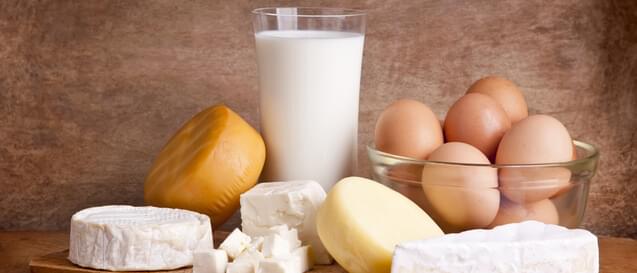
If you’ve heard that carrots are good for eyesight, you already know something about Vitamin A. What you may NOT know is, there are two kinds of Vitamin A. And unless you understand the difference, you still might be at risk of vision problems because statistics show that 51% of American adults are Vitamin A deficient.
As the name for a group of fat-soluble organic compounds important for maintaining healthy skin, bones and eyesight, Vitamin A falls into two main forms:As the name for a group of fat-soluble organic compounds important for maintaining healthy skin, bones and eyesight, Vitamin A falls into two main forms:
While both forms are important to health, it would be incorrect to believe that plant-based foods represent Vitamin A benefits equal to animal-based foods.
As fully formed Vitamin A, Retinol is ready to go as the form of Vitamin A that’s most easily used by your body.
Your body must convert Beta-Carotene to Retinol before your body can use it, and it’s not a 1-to-1 conversion. For every 6 units of Beta-Carotene you consume, your body only produces one unit of Retinol. In other words, you’d have to eat A LOT of fruits and vegetables to achieve RDA from Beta-Carotene alone.
To optimize usable amounts of Vitamin A from fruits and vegetables, nutritionists recommend eating them with a healthy form of fat.
Early warning signs of Vitamin A deficiency include:
Vitamin A is considered safe in natural form from food. However, in supplement form, Vitamin A can be toxic in large doses and cause birth defects. Because prenatal vitamins contain levels of Vitamin A, pregnant women should NOT take a separate Vitamin A supplement while taking prenatal vitamins.
Home Micronutrient Testing
Measure vital nutrient levels and identify key imbalances with at-home health testing. Get accurate lab results fast from LetsGetChecked. Get 25% off with code HEALTHYHABITS25.
Iron
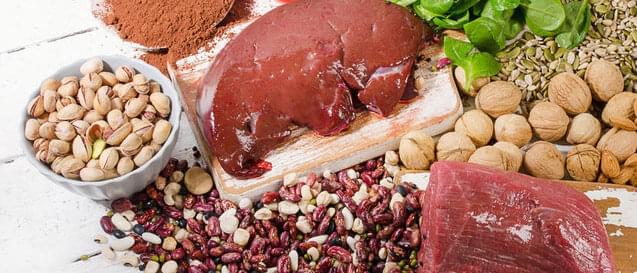
Iron is one of the most important minerals for women of all ages to prevent fatigue and anemia, but it’s especially important to pregnant women for the health of their unborn children.
Found in red meat, pork and poultry, iron is an important part of hemoglobin, the substance in red blood cells that carries oxygen from your lungs to the cells of your body. Without enough iron, your body can’t get enough oxygen, and exhaustion can affect everything from your brain function to your ability to fight off infections.
While both men and women can be iron-deficient, women are at particular risk. According to the Centers for Disease Control and Prevention, almost 10% of women have an iron deficiency.
Women of childbearing age are at heightened risk of iron deficiency because of monthly blood loss through menstruation. And pregnant women need twice as much iron as usual, since the extra iron is needed for increased blood flow and fetal growth. Without enough iron, pregnant women are at risk of premature birth or a low-birthweight baby.
Infants and children also need a lot of iron to grow. According to the National Heart, Lung and Blood Institute, a full-term infant uses up stored iron levels in the first 4-6 months of life.
Early warning signs of iron deficiency include:
The main thing to remember about iron is, there are two kinds: heme iron and nonheme iron. Heme iron (found in animal foods) is more easily absorbed by your body. Nonheme iron (found in plant foods) is harder for your body to absorb.
To maximize your iron absorption, avoid coffee during a meal, or switch to tea. One study by the American Journal of Clinical Nutrition showed that 1 cup of coffee reduced iron absorption from a hamburger meal by 61%, while a cup of tea only reduced iron absorption by 36%.
Calcium

Roughly 50% of Americans are deficient in Calcium, which your body needs to build and maintain strong bones and teeth and protect against osteoporosis. To correct deficiency, many dieticians recommend Calcium supplements or Calcium-rich foods like raw milk, kale and salmon, and those are all excellent options.
Trouble is, they may not be easy options for you.
Let me explain, and also tell you what you can do about it today.
According to Forbes, 76-million Americans are financially struggling right now to make ends meet, and when money gets tight, so do grocery budgets.
Food choices shift away from high-quality proteins, fruits and vegetables in favor of cheaper, more energy-dense foods like refined grains and foods with added sugars and fats. And according to research by the American College of Nutrition, this puts low-income and single-parent families at particular risk of Calcium deficiency.
Early warning signs of Calcium deficiency include:
Said another way: The evidence suggests that those who are at greatest risk of Calcium deficiency are the most financially challenged to avoid the danger. If this describes you, it’s certainly nothing to feel bad about. Things happen. So you do what you need to do to put food on the table. And if heading to the local organic market to buy fresh, Calcium-rich fish or vegetables isn’t in your budget, that doesn’t mean that you or your loved ones have to suffer Calcium deficiency.
Affordable, tasty and simple sources of Calcium include oranges, cream cheese, hazelnuts, almonds and sesame seeds. As a Calcium-rich alternative sweetener to sugar, try blackstrap molasses as a glaze on roasted sweet potatoes (which are also a source of Calcium, as well as Vitamin B12, Vitamin C, Magnesium and Iron).
Vitamin B12
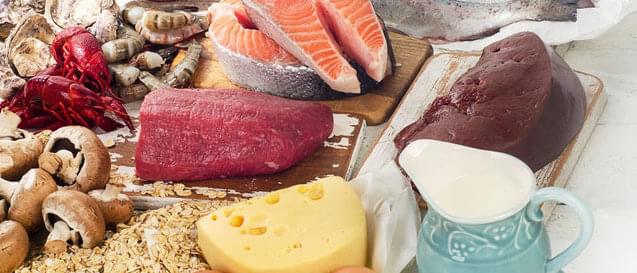
If you’re a vegetarian, a vegan or simply someone who doesn’t eat enough meat, studies show that you may have a 40% chance of suffering fatigue, brain fog, vision problems and more caused by Vitamin B12 deficiency.
Also known as cobalamin, Vitamin B12 is a water-soluble vitamin that plays a key role in keeping you energized, mentally sharp and feeling great. By converting carbohydrates to glucose, Vitamin B12 boosts metabolism and maintains healthy digestion. Vitamin B12 also keeps blood cells healthy, promotes mental clarity and helps reduce stress and depression.
Unfortunately, Vitamin B12 is different than other vitamins. It’s only found in animal-based protein foods like meat, eggs, milk, cheese and fish. This means vegetarians and people with digestive issues are at heightened risk of Vitamin B12 deficiency and blood conditions like pernicious anemia.
As well, Vitamin B12 can only be absorbed from food by stomach acid called Intrinsic Factor, which naturally declines with age. Because of this, research by Harvard University estimates 10%-30% of adults over 50 are Vitamin B12 deficient. However, data from the Tufts Framingham Offspring Study found that 40% of people ages 26-83 were Vitamin B12 deficient.
Early warning signs of Vitamin B12 deficiency include:
Long-term risks of Vitamin B12 deficiency include anemia, neurological complications (e.g. unsteady walking), increased mental confusion and dementia. If you eat meat, liver contains a whopping 18mcg of B12 in a 3oz. serving. If you’re a vegetarian or vegan, beware of the myth that plants like seaweed and spirulina contain Vitamin B12. In reality, they contain B12 analogs called cobamides, which block uptake of true Vitamin B12.
Vitamin B12 in liquid supplement form is easily absorbed by your body because it does not require Intrinsic Factor. So a daily B12 supplement in liquid form is a simple and easy way to restore and maintain Vitamin B12 levels.
Iodine

If you’re a young woman age 20-39 and you’re NOT taking an iodine supplement, please read this section carefully. If you’re planning on having a child one day, or if you’re currently pregnant, you could be jeopardizing your unborn child’s mental and physical development.
As a trace element found in sea water and soil close to the sea, iodine is an essential part of the thyroid hormones involved in regulating normal growth and development. Without enough iodine, deficiency can cause:
To protect Americans from these dangers, the U.S. government introduced iodized table salt in the 1920s. And today, Americans generally have “adequate” iodine levels according to the Second Nutrition Report by the Centers for Disease Control and Prevention. However, the report notes loudly that women of childbearing age have “iodine levels bordering on insufficiency,” and need to pay special attention to iodine deficiency for the “best possible brain development” of their children.
IMPORTANT THINGS TO KNOW
The American Thyroid Association recommends that all prenatal vitamins contain 150mcg of iodine, and should be taken during pregnancy and while nursing.
Vitamin C
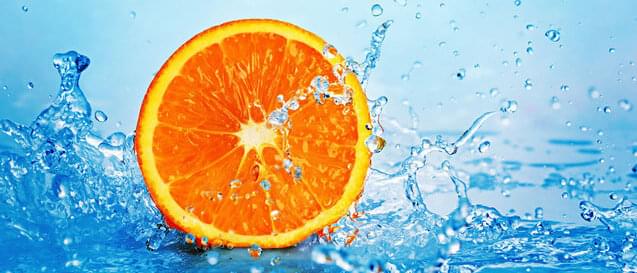
Most people think of scurvy (or, Vitamin C deficiency) as an historical, seafaring disease that claimed the lives of ancient sailors. Yet Vitamin C deficiency is alive and thriving in millions of homes right across America, and research shows that you could be among them—even if you think you’re eating enough fruits and veggies.
According to studies published in the American Journal of Health, roughly 29-million Americans aren’t getting enough Vitamin C. While children and seniors were generally closer to meeting the Recommended Daily Allowance, the study shows that 14% of men and 10% of women aren’t meeting RDA, and adults age 25-44 have the worst Vitamin C levels.
Part of the problem, according to researchers, may have to do with the kind of fruits and vegetables that people are eating. Although many Americans are meeting the National Cancer Institute’s 5-A-Day program (or, 5-9 servings of fruits and vegetables a day), the leading vegetables and fruits consumed in the U.S. are iceberg lettuce, raw tomatoes, French fries, bananas and orange juice. These five foods represent 30% of all fruits and veggies consumed by Americans. Yet with the exception of orange juice, all are poor sources of Vitamin C.
Another problem is consistency. As a nutrient that helps protect you against heart disease, cancer and stroke, Vitamin C also helps keep you looking young and feeling energized by promoting collagen synthesis and helping your body absorb iron from plant foods. However, your body can’t store Vitamin C and can’t produce it. So unless you’re regularly eating Vitamin C-rich fruits and vegetables like grapefruit and broccoli, or taking a daily supplement, Vitamin C deficiency is a real threat.
Early warning signs of Vitamin C deficiency (a.k.a. scurvy) include:
For an easy Vitamin C snack, try strawberries, kiwi fruit or papaya. As a quick side dish, dust some roasted potatoes with paprika. (Both have Vitamin C.)
Vitamin B6
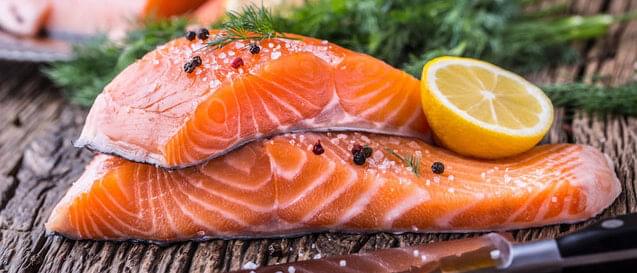
If you’ve read this far, I’d like to thank you for empowering yourself toward better health—and a better life—with important knowledge. Not everyone takes the time to make that kind of investment in themselves. So please give yourself a big “Boo-yah!” for taking incredible action.
I’m sure you’re anxious to get started on your new, nutrient-improved life. So I’ll keep this last part short.
According to the Centers for Disease Control and Prevention, 10.5% of Americans are deficient in Vitamin B6, which helps protect your immune system.
Also known as Pyridoxamine, Vitamin B6 additionally has positive effects on your mood, since it helps in the production of serotonin (your body’s natural “happy chemical”). Vitamin B6 also boosts metabolism and protects you against heart disease, arthritis and anemia.
Organ meats like liver are the richest natural sources of Vitamin B6. If you’re not a fan of organ meats, try salmon or wild-caught tuna.
As an easier, on-the-go snack, 1 medium banana has roughly 21% of the RDI for Vitamin B6. You can also choose hazelnuts, avocados or sunflower seeds.
As part of a quick meal, try adding canned chickpeas to salad or pasta. 1 cup of chickpeas represents an incredible 55% of RDI.
Early warning signs of Vitamin B6 deficiency include:
Factors for heightened risk of Vitamin B6 deficiency include:
Vitamin B6 is commonly available in multivitamins, in B complex vitamins and as a stand-alone supplement. In all forms (capsules, tablets and liquids), your body absorbs Vitamin B6 about as equally well from supplements as it does from food.
Dedicated to helping you achieve optimal health and wellness,